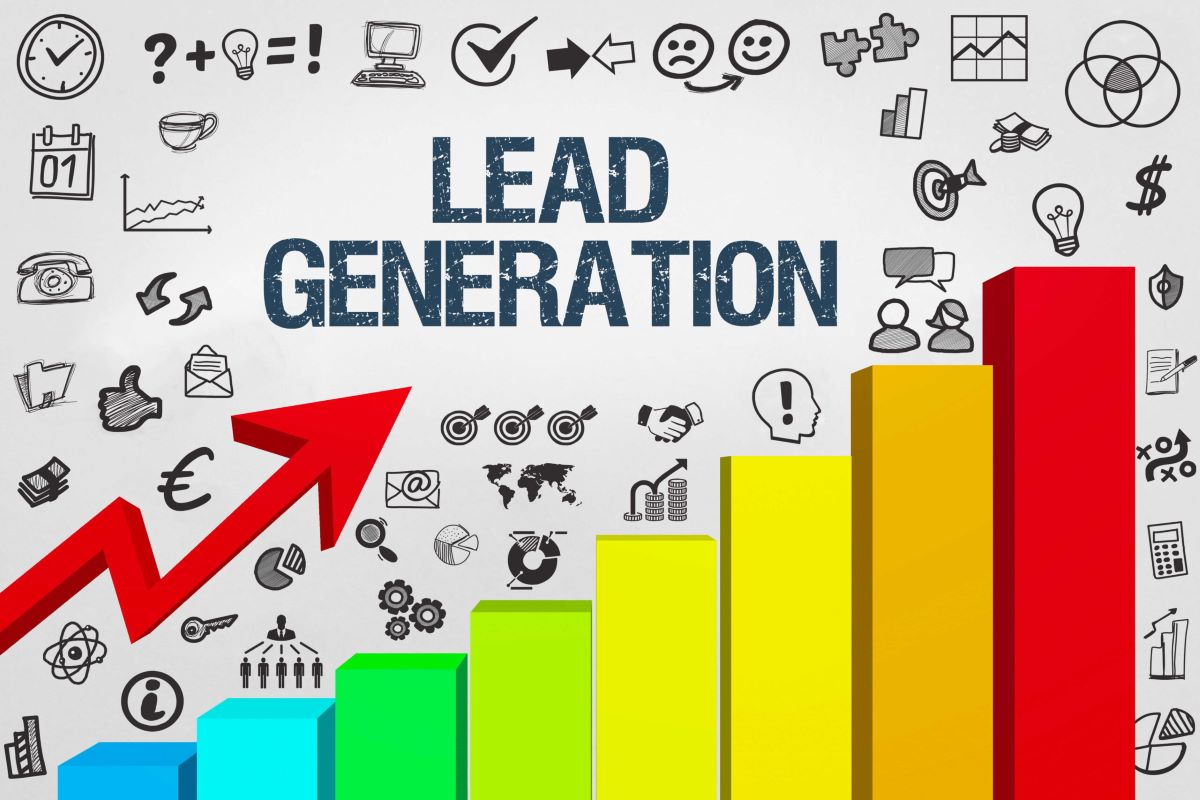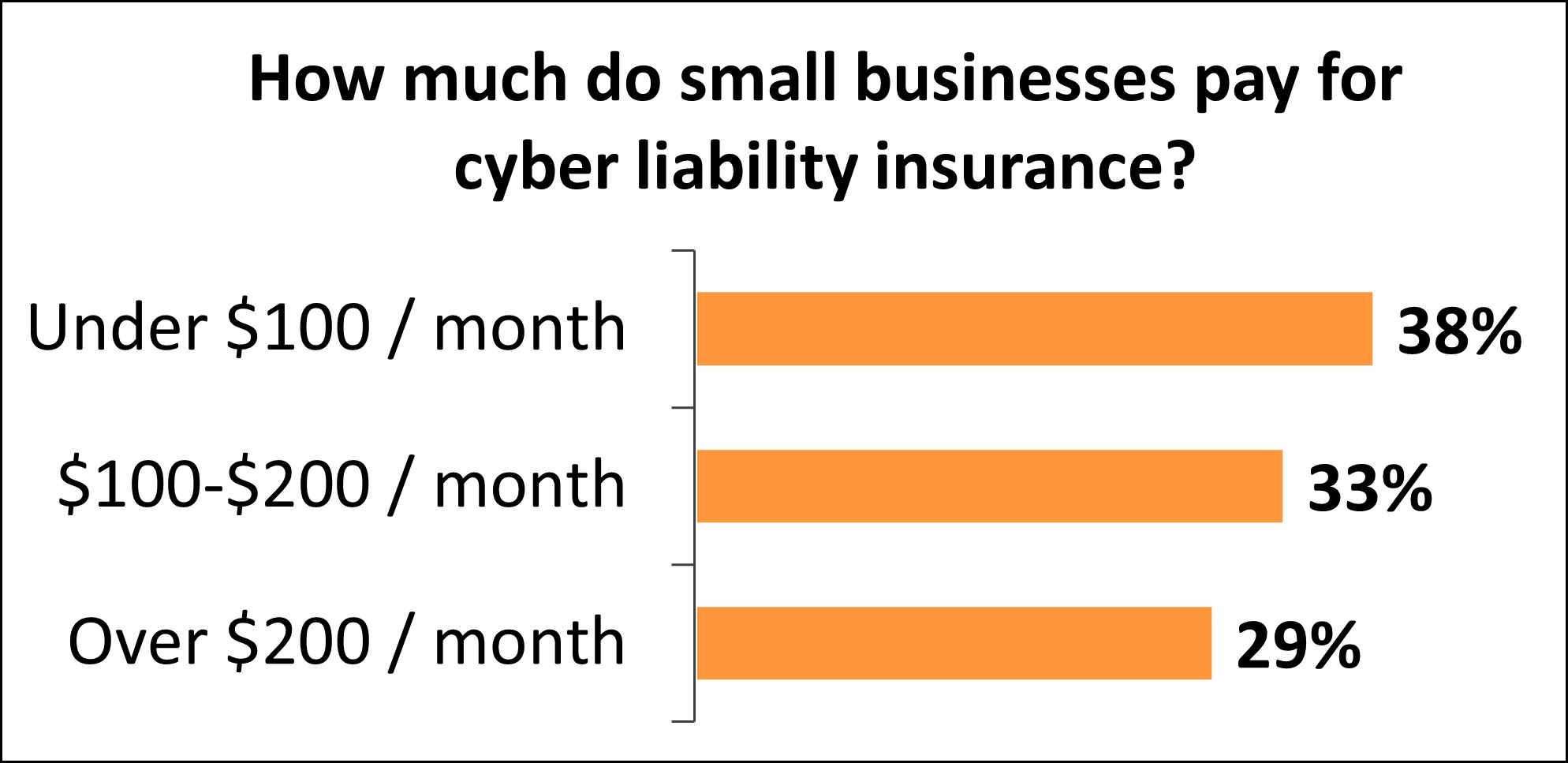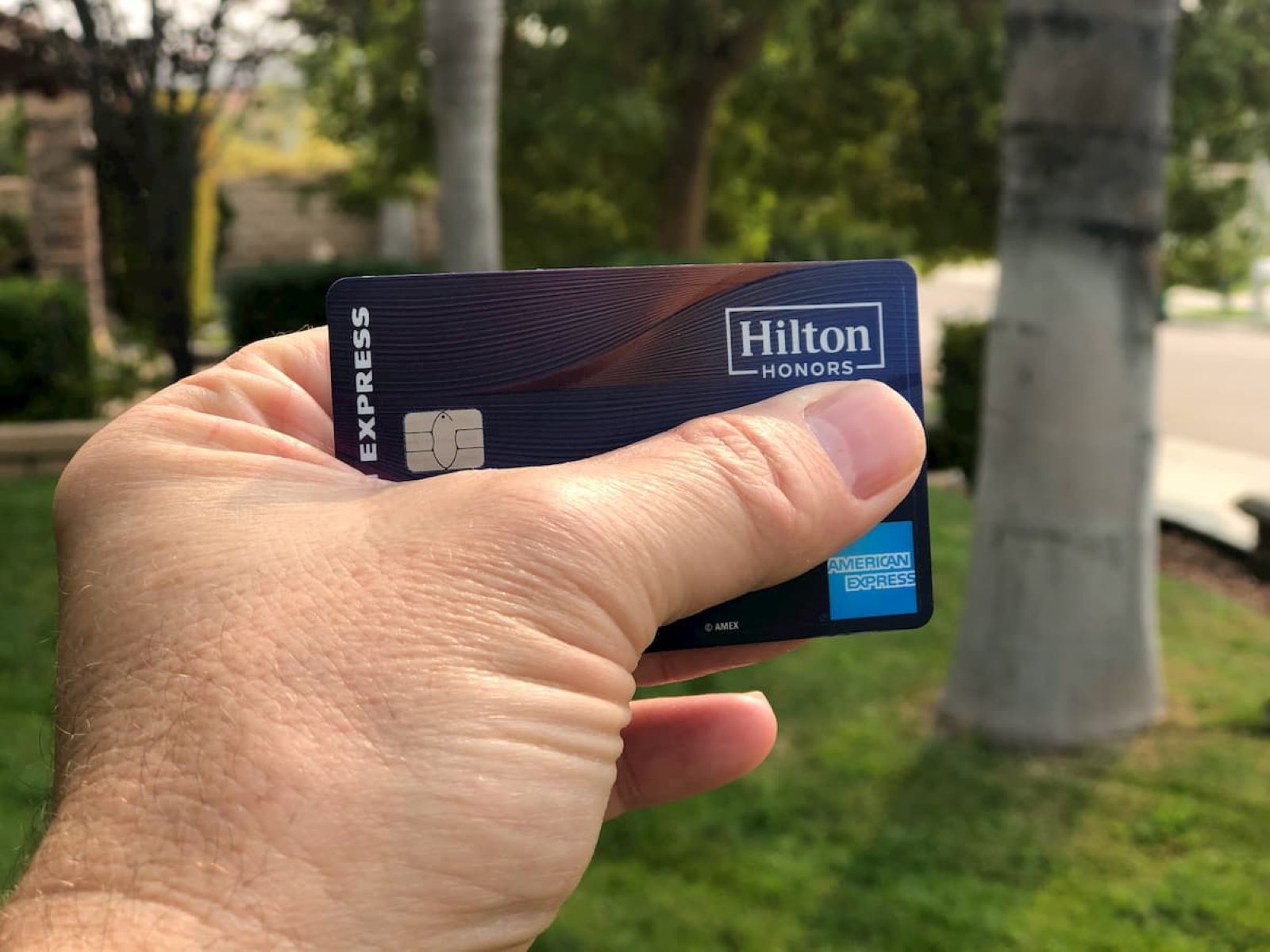

Finance
How To Get Insurance Leads
Modified: December 30, 2023
Looking to generate leads in the finance industry? Learn how to get insurance leads and boost your business with our expert strategies and tips.
(Many of the links in this article redirect to a specific reviewed product. Your purchase of these products through affiliate links helps to generate commission for LiveWell, at no extra cost. Learn more)
Table of Contents
- Introduction
- Understanding Insurance Leads
- Types of Insurance Leads
- Ways to Generate Insurance Leads
- Using Online Platforms to Get Insurance Leads
- Leveraging Social Media for Insurance Lead Generation
- Conducting Email Marketing Campaigns for Insurance Leads
- Networking and Referrals for Insurance Lead Generation
- Working with Lead Generation Companies
- Tracking and Analyzing Insurance Leads
- Conclusion
Introduction
Insurance is a crucial aspect of our lives, providing protection and financial security in the face of unexpected events. However, insurance companies often face the challenge of finding potential customers who are interested in their products or services. This is where insurance leads play a fundamental role in helping companies connect with potential clients.
An insurance lead refers to an individual or business entity that has expressed interest in purchasing an insurance policy. These leads can be generated through various channels, such as online platforms, social media, email marketing, referrals, and lead generation companies. By focusing on effective lead generation strategies, insurance companies can increase their chances of successfully acquiring new customers.
In this article, we will explore different types of insurance leads and delve into various methods to generate leads for insurance companies. Furthermore, we will discuss the importance of leveraging online platforms, social media, email campaigns, referrals, and working with lead generation companies to maximize the generation of high-quality insurance leads. Additionally, we will touch upon tracking and analyzing insurance leads to measure the effectiveness of lead generation efforts.
So, whether you are an insurance agent or a company looking to increase your customer base, this article will provide valuable insights and strategies to help you generate insurance leads efficiently and effectively.
Understanding Insurance Leads
Before diving into the various methods of generating insurance leads, it is crucial to understand what exactly an insurance lead is and why it is essential for insurance companies.
An insurance lead is essentially a potential customer who has shown interest in purchasing an insurance policy. This interest can be expressed through various actions, such as filling out a contact form on a website, requesting a quote, or subscribing to a newsletter. These leads provide insurance companies with valuable information about individuals who have shown a need or desire for insurance coverage.
Insurance leads can be further categorized into two main types: exclusive leads and shared leads. Exclusive leads are generated for a specific insurance company, and they are not shared or sold to other companies. On the other hand, shared leads are typically obtained through lead generation companies and are sold to multiple insurance agents or companies. It is essential to know which type of lead you are working with to tailor your approach accordingly.
The quality of insurance leads is another crucial factor to consider. High-quality leads are those that have a higher likelihood of converting into customers. They are typically individuals who have expressed a specific interest in a particular type of insurance and have provided accurate and relevant contact information. The quality of the leads can impact the success rate of your lead generation efforts and ultimately the conversion rate of those leads into paying customers.
Understanding your target audience is also essential when it comes to insurance lead generation. Different demographics and segments have varying insurance needs and preferences. By identifying and understanding your target audience, you can tailor your lead generation strategies, messages, and offers to resonate with them effectively.
Lastly, it is vital to have a system in place for managing and nurturing insurance leads. This includes tracking and organizing leads, following up with them promptly, and providing relevant and valuable information to keep them engaged. This systematic approach ensures that no leads slip through the cracks and increases the chances of converting leads into customers.
Now that we have a solid understanding of insurance leads, let’s explore the various methods to generate these leads for your insurance company.
Types of Insurance Leads
When it comes to generating insurance leads, it’s important to understand the different types of leads available to insurance companies. Each type has its own characteristics and can be valuable in its own way. Let’s explore some common types of insurance leads:
- Direct leads: These leads are generated when potential customers contact the insurance company directly, either through phone calls or by filling out a contact form on the company’s website. Direct leads have expressed a clear interest in the company’s products or services and are more likely to convert into customers. These leads may come from various sources, such as referrals, advertising campaigns, or organic search results.
- Internet leads: Also known as online leads, internet leads are generated through online platforms and channels. These leads can come from search engine results, online advertisements, social media platforms, or affiliate websites. Internet leads have often made a proactive search for insurance policies or have been exposed to digital marketing efforts. They can be highly targeted and have a higher chance of conversion.
- Referral leads: Referral leads are generated when existing customers or contacts refer friends, family members, or colleagues to the insurance company. These leads are highly valuable as they come with a recommendation or endorsement from someone the potential customer already trusts. Referral leads can be generated through incentives, word-of-mouth, or referral programs offered by the insurance company.
- Purchased leads: Insurance companies can also choose to purchase leads from lead generation companies or third-party vendors. These leads are usually generated through various marketing efforts, and they are sold to multiple insurance agents or companies. Purchased leads can be a convenient way to access a large pool of potential customers, but it is essential to ensure the quality and exclusivity of the leads before making a purchase.
- Event leads: Events such as trade shows, conferences, and community gatherings can be excellent opportunities to generate insurance leads. By participating in industry events or hosting their own events, insurance companies can engage directly with potential customers and collect contact information. Event leads have the advantage of personal interaction and relationship building, which can significantly impact conversion rates.
It’s worth noting that the quality and conversion potential of insurance leads can vary across these types. It’s important for insurance companies to analyze and track the performance of leads from different sources to optimize their lead generation efforts and focus on the channels that yield the highest ROI.
Now that we have explored the types of insurance leads, let’s move on to discover effective strategies for generating these valuable leads.
Ways to Generate Insurance Leads
Generating insurance leads is a crucial part of growing an insurance business. Without a steady stream of leads, it becomes challenging to acquire new customers and expand your client base. Let’s explore some effective ways to generate insurance leads:
- Optimize your website: Your website is often the first point of contact for potential customers. Make sure it is optimized for search engines by incorporating relevant keywords, creating informative content, and ensuring a user-friendly experience. Include clear calls-to-action and contact forms to capture leads.
- Create compelling content: Develop high-quality content that educates and engages your target audience. This can be in the form of blog articles, guides, infographics, or videos. Share valuable information about insurance policies, industry updates, and tips for choosing the right coverage. This not only positions you as an expert but also attracts potential customers who may be searching for insurance-related information.
- Offer free resources: Provide free resources such as ebooks, checklists, or calculators on your website in exchange for visitors’ contact information. This allows you to capture leads and nurture them through email marketing campaigns.
- Utilize search engine optimization: Implement SEO techniques to improve your website’s visibility in search engine results. Conduct keyword research to identify relevant terms and incorporate them into your website’s content and metadata. This can help drive organic traffic and increase the likelihood of generating quality leads.
- Run targeted online ads: Utilize online advertising platforms like Google Ads or social media advertising to target specific demographics and display your insurance offerings to potential customers. Use compelling ad copy and landing pages to encourage conversions and capture leads.
- Host webinars or workshops: Organize informative webinars or workshops on insurance topics that are relevant to your target audience. Promote these events through your website, social media, and email marketing campaigns. By offering valuable insights and solutions during these events, you can attract potential customers and capture their contact information.
- Create partnerships: Establish partnerships with related businesses or professionals to cross-promote each other’s services. For example, you can collaborate with real estate agents, financial advisors, or mortgage brokers to refer clients to one another. This can be a mutually beneficial arrangement that generates leads for both parties.
- Attend networking events: Participate in industry events, conferences, or local business gatherings to network with potential customers and industry professionals. Build relationships and exchange contact information to nurture leads and expand your network.
Remember, generating insurance leads requires consistent effort and a multi-channel approach. Experiment with different strategies, track your results, and refine your approach based on what works best for your target audience and business goals. By implementing these lead generation strategies, you can increase your chances of acquiring high-quality leads and growing your insurance business.
Using Online Platforms to Get Insurance Leads
In today’s digital age, online platforms offer immense opportunities for insurance companies to generate leads. With the majority of consumers turning to the internet to research and purchase insurance, it is crucial for insurance businesses to establish a strong online presence. Here are some effective ways to leverage online platforms to get insurance leads:
- Website optimization: Ensure that your website is user-friendly, visually appealing, and optimized for search engines. Use relevant keywords in your content, meta tags, and headings to improve your website’s visibility in search engine results. Include clear calls-to-action and contact forms to capture leads.
- Content marketing: Develop informative and valuable content such as blog articles, guides, and videos that address common insurance concerns and provide helpful information. Share this content on your website and promote it on social media platforms to attract potential customers and generate leads.
- Social media marketing: Utilize social media platforms like Facebook, Twitter, LinkedIn, and Instagram to engage with your target audience and promote your insurance offerings. Share educational content, interact with users, and run targeted ad campaigns to drive traffic to your website and capture leads.
- Pay-per-click (PPC) advertising: Implement PPC advertising campaigns on platforms like Google Ads or Bing Ads. Create targeted ads that appear when users search for insurance-related keywords. Direct users to specific landing pages with contact forms to capture their information and generate leads.
- Email marketing: Build an email list by offering valuable resources or incentives on your website in exchange for visitors’ email addresses. Use email marketing campaigns to nurture leads, share informative content, and promote your insurance services. Personalize your emails and segment your list to increase engagement and conversion rates.
- Online directories and review sites: List your insurance business on online directories and review sites such as Google My Business, Yelp, and Angie’s List. Encourage satisfied customers to leave positive reviews, as these can enhance your online reputation and attract potential leads.
- Online lead generation tools: Explore online lead generation tools specifically designed for the insurance industry. These tools can help you target and capture leads through online forms, landing pages, and contact management systems. They may also provide features such as lead scoring and lead nurturing to enhance the effectiveness of your lead generation efforts.
Remember to constantly monitor and analyze your online marketing efforts to optimize your lead generation strategies. Keep track of website traffic, engagement metrics, and conversion rates to ensure you are generating quality leads and achieving a positive return on investment.
By effectively utilizing online platforms, insurance companies can significantly expand their reach and generate a steady stream of high-quality leads. Stay active, engage with your audience, and provide valuable content to establish your online presence and attract potential customers.
Leveraging Social Media for Insurance Lead Generation
Social media platforms have become powerful tools for businesses to connect with their target audience, and insurance companies can leverage this opportunity to generate leads. By utilizing social media effectively, insurance businesses can increase brand awareness, engage with potential customers, and ultimately generate quality leads. Here are some strategies to leverage social media for insurance lead generation:
- Choose the right platforms: Identify the social media platforms where your target audience is most active. Platforms such as Facebook, LinkedIn, Twitter, and Instagram are commonly used by insurance companies. Customize your content and approach based on the platform’s demographics and features.
- Build an engaging social media presence: Create and optimize your social media profiles by using professional and visually appealing designs. Consistently share informative and engaging content related to insurance, such as helpful tips, industry news, and customer success stories. Incorporate relevant keywords and hashtags to enhance discoverability.
- Run targeted ad campaigns: Take advantage of social media advertising features to target specific demographics, interests, and behaviors. Create ads that highlight the benefits and features of your insurance products or services. Include compelling calls-to-action or lead generation forms to capture contact information from interested users.
- Encourage user-generated content: Encourage satisfied customers to share their positive experiences with your insurance company on social media. User-generated content can serve as social proof and influence potential customers. Consider providing incentives or running contests to motivate customers to share their stories or testimonials.
- Engage with your audience: Actively engage with your followers by responding to comments, messages, and mentions. Answer questions, provide helpful information, and address concerns promptly and professionally. Building a rapport with your audience can foster trust and encourage them to consider your insurance offerings.
- Utilize visual content: Visual content tends to grab users’ attention and increases engagement. Share visually appealing images, infographics, videos, or carousels that educate, entertain, or inspire your audience. Use visuals to highlight the importance of insurance coverage and the peace of mind it provides.
- Collaborate with influencers: Identify influencers or industry experts in the insurance or related fields and collaborate with them to expand your reach. Influencers can help promote your insurance offerings to their followers, boosting your brand visibility and driving leads. Ensure the influencers align with your values and target audience.
- Use social media analytics: Monitor the performance of your social media efforts using analytics tools provided by the platforms. Analyze metrics such as reach, engagement, click-through rates, and conversions. This data can help you refine your social media strategies and optimize lead generation efforts.
Remember, consistency and authenticity are key when leveraging social media for lead generation. By providing valuable content, engaging with your audience, and utilizing the various features and targeting options available, insurance companies can effectively generate leads and increase their customer base.
Conducting Email Marketing Campaigns for Insurance Leads
Email marketing remains one of the most effective digital marketing strategies for generating and nurturing insurance leads. By leveraging the power of personalized communication, insurance companies can establish a direct connection with potential customers and guide them through the sales funnel. Here are some key steps to conduct successful email marketing campaigns for insurance leads:
- Build a targeted email list: Start by building an email list of individuals who have shown interest in your insurance products or services. This can be achieved through website opt-in forms, lead magnets, or other lead generation strategies. Ensure you obtain permission to contact these individuals to comply with email marketing regulations.
- Create compelling and valuable content: Craft engaging and informative content that resonates with your target audience. This could include educational articles, tips for choosing the right coverage, or updates on insurance industry trends. Customize the content based on the specific needs and pain points of your leads.
- Segment and personalize your emails: Segment your email list based on various criteria such as demographics, interests, or previous interactions. This allows you to create personalized email campaigns that address specific needs and preferences. Use dynamic content and merge tags to customize the emails further with recipient-specific information.
- Create attention-grabbing subject lines: Your subject line is the first thing recipients see, so make it engaging and compelling. Personalize subject lines whenever possible and use persuasive language to entice recipients to open your emails. A well-crafted subject line can significantly impact open rates and increase the chances of generating leads.
- Include clear calls-to-action (CTAs): Clearly communicate the next step you want your leads to take in your emails. Whether it’s requesting a quote, scheduling a consultation, or downloading a guide, include CTAs that are easy to understand and visually appealing. Use buttons, contrasting colors, and compelling copy to make your CTAs stand out.
- Automate your email campaigns: Utilize email automation tools to streamline your campaigns and deliver timely and relevant content to your leads. Set up automated sequences based on lead behavior or specific triggers, such as filling out a contact form or downloading a resource. Automation ensures consistency in your communication and helps nurture leads effectively.
- Monitor and analyze campaign performance: Track key metrics such as open rates, click-through rates, and conversion rates to evaluate the effectiveness of your email campaigns. Use A/B testing to optimize subject lines, content, and CTAs for better engagement. Analyze the data to make informed decisions and continuously improve your email marketing strategies.
- Nurture leads through drip campaigns: Implement drip campaigns that deliver a series of targeted emails over a specific timeframe. These campaigns help educate and nurture leads, keeping them engaged and moving them closer to making a purchase decision. Gradually introduce more detailed information about your insurance offerings and provide value throughout the drip sequence.
While conducting email marketing campaigns for insurance leads, it is essential to follow email marketing best practices and adhere to relevant data protection and privacy regulations. Respecting your leads’ privacy and providing an easy option to unsubscribe from your email list helps maintain a positive reputation and build trust with your audience.
By implementing these strategies, insurance companies can effectively utilize email marketing to nurture leads, build relationships, and ultimately convert interested prospects into loyal customers.
Networking and Referrals for Insurance Lead Generation
Networking and referrals are time-tested methods for generating insurance leads. By building and nurturing relationships with individuals and businesses, insurance professionals can tap into a reliable source of quality leads. Here are some effective strategies for leveraging networking and referrals in insurance lead generation:
- Join professional associations: Become a member of industry-specific associations, such as local insurance associations or business networking groups. Attend meetings, events, and conferences to connect with fellow professionals, potential customers, and referral sources. Actively participate and contribute to these communities to establish yourself as a trustworthy insurance expert.
- Cultivate relationships with existing customers: Your existing customers can be a valuable source of referrals. Provide exceptional service and stay in touch with your clients even after the initial sale. Regularly communicate with them through personalized emails, phone calls, or even in-person meetings. Ask for referrals and offer incentives for successful referrals.
- Establish partnerships with other professionals: Collaborate with professionals who are in related fields, such as real estate agents, mortgage brokers, financial advisors, or attorneys. Develop mutually beneficial relationships where you refer clients to them, and they refer potential insurance leads to you. These partnerships can significantly expand your network and generate a steady stream of referrals.
- Attend community events: Participate in local community events, volunteer activities, or charity fundraisers to connect with individuals and businesses in your area. Engage in conversations and build relationships based on trust and shared interests. These interactions can lead to potential referrals or direct leads within your community.
- Host educational workshops or webinars: Offer free educational workshops or webinars on insurance-related topics for individuals or businesses in your area. Share valuable information and insights while showcasing your expertise. These events provide an opportunity to connect with attendees and establish trust, leading to potential referrals or direct leads.
- Offer referral incentives: Develop a referral program where you provide incentives to individuals or businesses who refer leads to you. This can be in the form of discounted insurance rates, gift cards, or even monetary rewards. By rewarding those who refer leads, you motivate them to actively promote your services.
- Join online professional networks: Utilize online platforms, such as LinkedIn, to connect with professionals and businesses in the insurance industry. Engage in industry-related discussions, share insights, and establish yourself as a valuable resource. Actively participate in online groups and forums to expand your network and potentially generate referrals.
- Follow up and express gratitude: Whenever you receive a referral, promptly follow up and express your gratitude to the referring party. Keep them informed of the progress and outcome of the referral. By maintaining a strong relationship and showing appreciation, you encourage continued referrals in the future.
Remember, networking and referrals require consistent effort and nurturing of relationships. It is crucial to provide exceptional service to your existing customers and establish yourself as a knowledgeable and trustworthy insurance professional. By actively networking and leveraging referrals, insurance professionals can tap into a reliable source of high-quality leads and expand their client base.
Working with Lead Generation Companies
Lead generation companies can be valuable partners for insurance companies looking to expand their customer base. These companies specialize in generating and qualifying leads, saving insurance professionals time and effort in the lead generation process. Here are some key considerations and benefits of working with lead generation companies:
- Access to a wider pool of leads: Lead generation companies have established networks and resources to generate a large volume of leads. By partnering with them, insurance companies can gain access to a wider pool of potential customers who have already expressed interest in insurance products or services.
- Targeted and qualified leads: Lead generation companies employ various strategies to ensure the leads they provide are qualified and meet specific criteria. They typically use advanced targeting techniques and data analytics to identify leads who are more likely to convert into customers. This filtration process ensures that insurance professionals receive high-quality leads that are more likely to result in sales.
- Time and cost savings: Outsourcing lead generation to specialized companies saves insurance professionals the time and effort required to generate leads on their own. This allows them to focus on other aspects of their business, such as building client relationships and providing excellent customer service. Additionally, working with lead generation companies can be cost-effective compared to investing in in-house lead generation efforts.
- Expertise and industry knowledge: Lead generation companies have extensive experience and expertise in the field of lead generation. They stay up to date with industry trends, evolving strategies, and best practices. By working with these companies, insurance professionals can leverage their knowledge and benefit from their specialized skills.
- Flexibility and scalability: Lead generation companies offer flexibility in terms of lead volume and can scale their services based on the insurance professional’s needs. Whether the requirement is a few leads or a larger volume, lead generation companies can accommodate the specific demands and adjust their strategies accordingly.
- Measurable results and analytics: Lead generation companies provide detailed analytics and reporting on lead performance. This enables insurance professionals to track the success of their lead generation campaigns, assess the return on investment, and make data-driven decisions to optimize their lead generation efforts further.
- Compliance and data regulations: Reputable lead generation companies have systems in place to ensure compliance with relevant data protection and privacy regulations. They understand the importance of safeguarding customer information, thereby giving insurance professionals peace of mind that their leads are being sourced and handled ethically and legally.
When partnering with lead generation companies, it is vital for insurance professionals to conduct thorough research and due diligence. Choose companies that have a proven track record, positive industry reputation, and a clear understanding of the insurance industry. It’s also important to establish clear communication and expectations to ensure a successful working relationship.
Working with lead generation companies can be a valuable and efficient way for insurance companies to generate a consistent flow of qualified leads. By leveraging their expertise, insurance professionals can focus their efforts on nurturing leads and converting them into loyal customers.
Tracking and Analyzing Insurance Leads
Tracking and analyzing insurance leads is a critical component of any lead generation strategy. By monitoring the performance of your lead generation efforts, you can identify areas of improvement, optimize your strategies, and ultimately increase your chances of converting leads into customers. Here are some key steps to effectively track and analyze your insurance leads:
- Utilize lead tracking software: Implement lead tracking software or customer relationship management (CRM) systems to efficiently capture and organize lead information. These tools allow you to track lead sources, contact information, lead interactions, and other relevant data. A CRM system can provide valuable insights into the lead’s journey, from initial contact to conversion.
- Define key performance indicators (KPIs): Identify and establish KPIs that align with your lead generation goals. These metrics can include lead conversion rate, lead-to-customer rate, cost per lead, or return on investment. Clearly define what success looks like for your lead generation efforts and track these KPIs regularly.
- Attribute leads to their respective sources: Assign leads to the specific sources or channels they originated from. This could be through online platforms, referral sources, networking events, or lead generation companies. By accurately attributing leads to their sources, you can determine which channels are generating the most valuable leads and allocate resources accordingly.
- Implement UTM parameters and tracking codes: Use UTM parameters and tracking codes in your digital marketing campaigns to track the effectiveness of specific campaigns, ads, or landing pages. This allows you to pinpoint which marketing efforts are driving the most leads and conversions. Analyze the data to optimize your campaigns and maximize their impact.
- Analyze lead interactions and behavior: Understand how leads are engaging with your content, emails, and website. Monitor open rates, click-through rates, and engagement metrics to gain insights into their level of interest and intent. Identify patterns or trends that indicate higher conversion likelihood, which can help you personalize and tailor your follow-up communications.
- Integrate with marketing automation tools: Incorporate marketing automation tools into your lead tracking and analysis process. These tools can help streamline lead nurturing, automate follow-up communications, and provide detailed analytics on lead engagement. By leveraging automation, you can track and analyze lead behavior more effectively and optimize your lead nurturing efforts.
- Regularly assess lead quality: Regularly evaluate the quality of your leads based on their conversion rates and the value they bring to your business. Analyze the characteristics and demographics of high-converting leads to refine your target audience and lead generation strategies. Continuously assess lead quality to ensure you are attracting the right leads for your insurance offerings.
- Continuously optimize and iterate: Use the insights gained from tracking and analyzing your insurance leads to optimize your lead generation strategies. Experiment with different approaches, test new campaigns, and refine your messaging. Implement changes based on the data to improve conversion rates and overall lead generation performance.
Remember, tracking and analyzing insurance leads should be an ongoing process. Regularly review your data, make data-driven decisions, and adapt your strategies accordingly. By continuously monitoring and optimizing your lead generation efforts, you can maximize your return on investment and drive sustainable growth for your insurance business.
Conclusion
Generating insurance leads is a vital aspect of growing an insurance business and expanding your customer base. By implementing a combination of different lead generation strategies, insurance companies can increase their chances of connecting with potential customers who are actively seeking insurance coverage. In this article, we explored various methods for generating insurance leads.
Understanding insurance leads and their importance in the sales process is crucial. Whether through direct leads, internet leads, referral leads, purchased leads, or event leads, each type brings its own value to the table. By identifying the types of leads that resonate with your target audience, you can tailor your lead generation efforts accordingly.
We discussed the significance of leveraging online platforms and social media for insurance lead generation. Optimizing websites, creating compelling content, utilizing search engine optimization, and running targeted online ads can significantly enhance the visibility of insurance companies in the digital landscape. Additionally, conducting email marketing campaigns can provide a personal touch and nurture leads through customized and informative content.
In addition to digital strategies, we explored the power of networking and referrals in generating insurance leads. Building professional relationships, establishing partnerships, attending community events, and offering referral incentives can tap into a reliable source of high-quality leads within your network.
Furthermore, working with lead generation companies can provide access to a wider pool of leads, targeted and qualified leads, and save time and effort in the lead generation process. Tracking and analyzing insurance leads is essential for optimizing lead generation efforts, identifying successful strategies, and continuously improving performance.
Ultimately, generating insurance leads requires a multi-faceted approach that combines online platforms, social media, networking, referrals, and continuous analysis. By implementing these strategies, insurance professionals can increase their visibility, engage with potential customers, and ultimately convert leads into loyal clients.
Remember, each insurance business is unique, so it’s important to experiment, adapt, and optimize your lead generation strategies based on your specific target audience and business goals. By staying persistent and proactive in your lead generation efforts, you can drive sustainable growth and success in the insurance industry.














